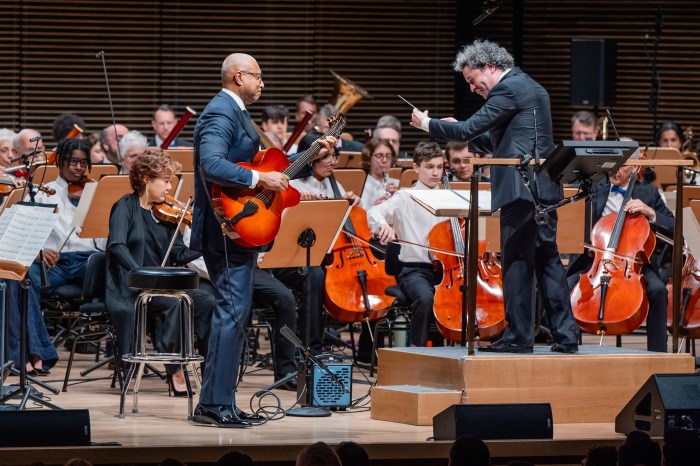From its birth in the 1960s, street art has been criminalized, perhaps nowhere more aggressively than in Philadelphia. But a lot has changed since 1986, when 13 juveniles and three adults were arrested for vandalism following a two-month investigation aimed at dismantling several graffiti collectives.

CIA, or “Crazy Insane Artists” was one of the Philly collectives
the 1986 bust targeted.
No longer signs of blight, street art in the form of wheat pastes, yarn bombings – and yes, even stenciled spray paint – are embraced by some of the city’s trendiest neighborhoods, and by many of the institutions that have historically opposed it.

A Tupac portrait on a Northern Liberties wall.
The city’s Mural Arts Program, borne in 1984 out of then-Mayor Wilson
Goode’s Anti-Graffiti Network, has partnered with street artists like
Steve “Espo” Powers and the Perre twins, Raoul “How” and David “Nosm,”
to cover walls with works that look suspiciously similar to those it was
formed to eradicate.

“Personal Melody,” a Midtown Village Mural Arts Program
collaboration with NYC-based street artists Raoul “How” and
David “Nosm” Perre.
“When people see areas that have graffiti, they have a different perception of the kind of area they’re in,” said Mike “Nom Now” Smith, one of four Philly street artists featured in Art in the Age’s “Furnessadelphia” exhibition, which opened in Old City on Friday and continues through Oct. 28. “Street art usually doesn’t strike that same kind of nerve, it doesn’t make people nervous. I honestly don’t know why that is, but usually, street art is a little bit more easily on the eyes and there’s a message.”

A sticker near 15th and Chestnut streets.
It helps that street art is now more widely considered, well, art.
Nothing demonstrates that more clearly than the crowds that flocked to
“Furnessadelphia,” overseen by Conrad Benner of popular blog StreetsDept. Featuring photographs of the street artists’ interpretations of
Frank Furness’ architecture – installed with permission on
Furness-designed banks – the exhibition and its reception reflects a new
generation of curators and consumers whose definition of “art” isn’t
confined to gold leaf-framed oil paintings hanging behind a velvet rope.


“I think it’s interesting when you can pull the inside out and pull the outside in — that’s the thing I really admire about street art,” Benner said. “Most of the people I know are not going to galleries to see the newest artist or things like that. Street art interacts with people in that you bump into it during your daily grind and it makes you smile, it makes you think. Pulling that into a gallery show is just another twist on that something you don’t expect.”

Benner with Art in the Age curator Daniel Abraham.
Something else you may not expect: street artists no longer hide under a veil of anonymity – a quick Google search of most pseudonyms instantly connects inquiring minds with full names and contact information. “I think if we’ve seen anything in our community change, it’s that street artists are saying, ‘Where is a better place for my art than on someone’s property or on a subway train?'” Benner said. “And they pick abandoned places, places that aren’t loved or owned by someone. I think that’s part of the reason why city artists don’t necessarily these days have to cover themselves up.”

A wheat paste in Northern Liberties from Baltimore-based Sorta,
complete with the artist’s signature.
In fact, far from going to great lengths to conceal their identities for fear of landing behind bars, artists now leverage the buzz generated by their street cred into lucrative branding and design gigs. Another of Furnessadelphia’s featured artists, Yis “Nosego” Goodwin, who built his reputation by painting otherworldly creatures on facades across the city, has won commission contracts with brands like Vitamin Water, Converse and Dreamland Toyworks.

A creation Yis “Nosego” Goodwin designed for Dreamland
Toyworks.
“A lot of people are just looking to get up and get their name out there in new ways and it’s kind of what street art is right now,” Smith said. “In my opinion, there’s a lot of people putting up pastes that normally wouldn’t put up pastes – photographers, illustrators, designers. … I think that it has a lot to do with advertising and the fact that everybody’s always looking for a new way to engage with younger audiences and be cool and whatnot. I don’t know how I feel about it in the grand scheme of things. I’ve done things for some companies like Vitamin Water and stuff and in the end, it doesn’t feel great when you walk away from something like that because it’s not something you’d normally do. It’s a double-edged sword.”

A stencil from Philly artist Get Up, who now has his own online
store.
“Anyone putting art on the street is trying to get recognized,” Benner said. “I don’t know that their end goal is ending up in a gallery or writing a book or whatever. I think the art world has changed in that respect. You don’t really need to be in a gallery – look at Philadelphia, we have the most murals in the world. There is a whole part of city that is just outdoor paintings. I don’t think the end goal of artists has changed, but I’m sure if people want to promote themselves, it’s a good, very dynamic, eye-catching way to do it.”

in the show.
A wheat paste from Doug “Harlequinade” Smith, another artist

A piece by another featured artist, Jessie “Ishknits” Hemmons,
commissioned by nonprofit Dress for Success.
And what does all that have to do with Victorian-era architect Furness, who is currently being celebrated by galleries citywide in commemoration of the 100-year anniversary of his death? “I know a lot of people in the city don’t know who he is, but about 150 years ago, he was the dude, the most awesome architect,” Benner said. “He decided he wanted to be an architect and had no formal training for that – he just started drawing. People liked his drawings so much, they started [building] them. I never went to college, so I draw inspiration from that. If you work hard and are really dedicated to something, you can create a path for yourself. Because he didn’t have any formal training, none of his buildings are inspired by any one period. They’re all this awesome mix of stuff – Gothic windows and then colonial or Roman columns – it’s really crazy.”

Wheat paste in Northern Liberties.

A gallery-goer peruses some of Furness’ designs.
And apparently, Furness’ ethos wasn’t too far from that of many street artists. “He seemed to be a pioneer-type individual,” said Goodwin, another artist featured. “Since he was a self-taught architect, I think that’s powerful and him being such a powerful figure, these characters I illustrated are kind of inspired from that whole march forward to seize whatever you desire. It’s a more conceptual inspiration.”

Benner in front of Nosego’s work at 6th and Spring Garden streets.

Smith was also inspired by Furness’ personal life. “He was a pretty interesting dude,” he said. “The reason I made what I made was he was awarded a medal honor in the Civil War for gallantry – apparently, he ran across an open field under enemy fire and saved some kind of station. That was super important. I thought that was more interesting than the architecture. I wanted to give a different spin on it – rather than paying homage to the buildings, it’s more of an homage to the person.”

Benner thinks that Furness would have appreciated the homage. “I think that he would admire the idea that you just create something for yourself, not for anyone else,” he said. “You don’t have to get people to support you, you don’t even need a gallery owner to want it. You don’t need people to buy it. Just create something you like, then promote it yourself.”

A stencil on North Broad’s Divine Lorraine.

Stencil and wheat pastes in Callowhill area.
But for all the acceptance street art has garnered over the past few years, the show also served as a reminder that it’s not yet embraced by all. By the time it began, two of the works it documented had been removed – a yarn hanging by Jessie “Ishknits” Hemmons and a wheat paste by Doug “Harlequinade” Smith, both installed in Old City mere days before the opening. “They were given the permission by people at the top,” Art in the Age curator Daniel Abraham said. “But the people running the building, the property managers and the security guards, saw it as street art and had no idea what its intentions were. To them, it looked like something that didn’t belong, so I guess they took it down.”

Hemmons’ short-lived installation for “Furnessadelphia.”



























